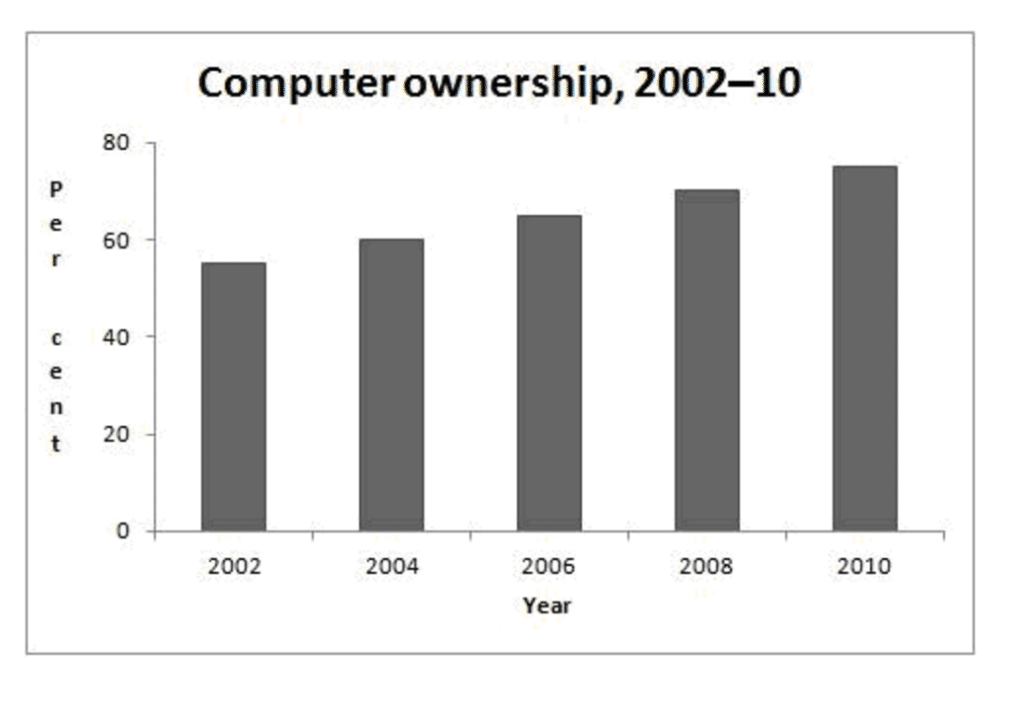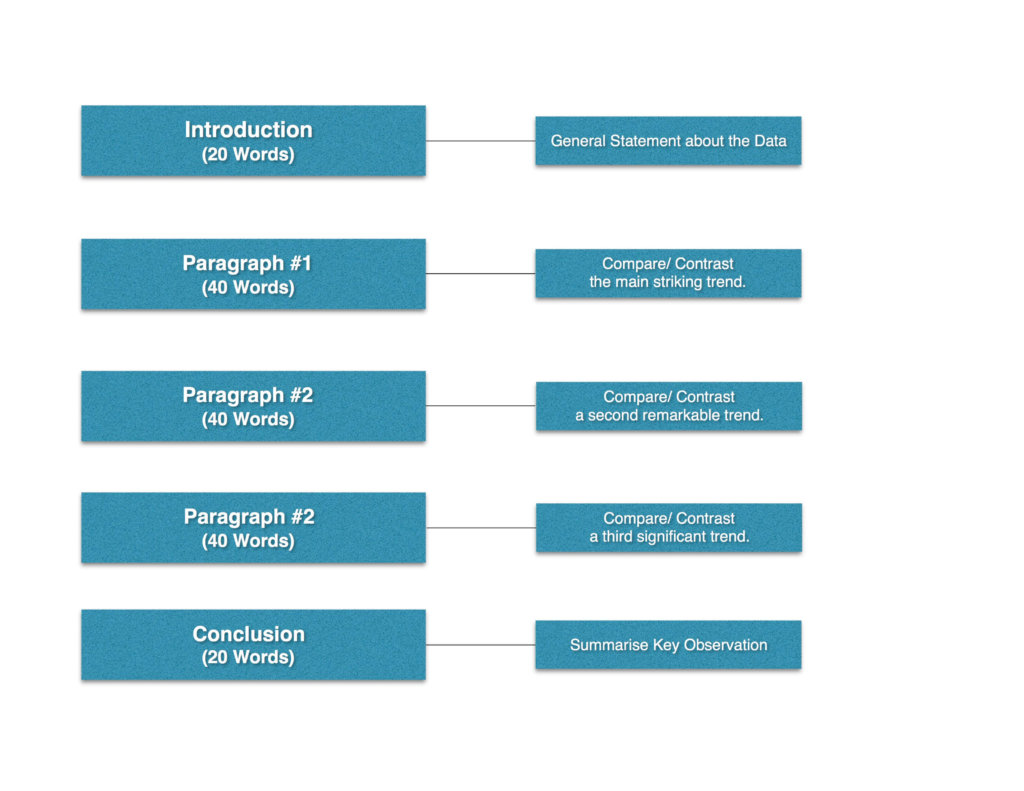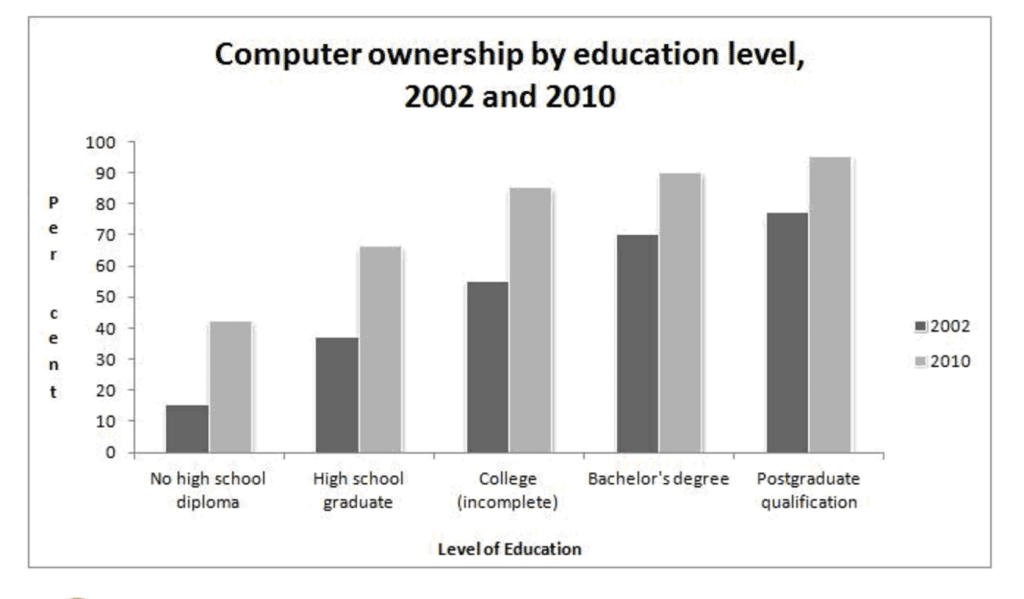Supongo que si estás leyendo esto ya eres plenamente consciente de que la tarea 1 del Writing del IELTS Académico te pide que pases 20 minutos interpretando y escribiendo sobre una gráfica, una tabla, un esquema de barras o un diagrama. ¿Pero cómo hacer para que se te ocurran al menos 150 palabras para describir la limitada información visual que te dan? Utiliza la plantilla que te recomiendo a continuación, que verás que te ayudará a terminar el ensayo de la tarea 1 en un abrir y cerrar de ojos, para que puedas concentrarte en la tarea 2 que vale más puntaje.
Plantilla básica para la tarea 1 del IELTS Académico
Lo más importante a recordar aquí es que la Tarea Académica 1 debe estructurarse como un ensayo con introducción, dos o tres párrafos que resuman la información clave del texto y una breve conclusión para finalizar.
Veamos cada uno.
Ejemplo
Daré algunos ejemplos para cada sección del ensayo utilizando estas gráficas de la Tarea Académica 1, proporcionadas por el British Council.
I’ll be providing examples for each sentence using these sample Academic Task 1 charts provided by the British Council.
The graphs above give information about computer ownership as a percentage of the population between 2002 and 2010, and by level of education for the years 2002 and 2010.
The graphs above give information about computer ownership as a percentage of the population between 2002 and 2010, and by level of education for the years 2002 and 2010.
Summarise the information by selecting and reporting the main features, and make comparisons where relevant.
Write at least 150 words.
Introducción
Después de haber leído las instrucciones y estudiado el diagrama, escribe una oración general sobre la información.
Algunas cosas que debes tener en cuenta aquí:
- Una oración es suficiente
- Reemplaza las palabras de la oración general con sinónimos o paráfrasis donde puedas.
- No escribas la palabra below (más adelante) en tu introducción
- Sugiero la frase: “The {graph/chart/diagram} illustrates…”.
Por ejemplo: The two corresponding bar charts show data about computer ownership between 2002 and 2010; one with an overall percentage and the other with a further classification by level of education.
Párrafos de justificación / texto principal
Aquí debes escribir dos o tres párrafos que describan las tendencias o cambios PRINCIPALES, es decir los MÁS GRANDES / SIGNIFICATIVOS / NOTABLES / DESTACADOS / SORPRENDENTES.
Asegúrate de:
- Evitar escribir listas de detalles.
- Escribir sobre tendencias generales y fundamenta lo que dices con datos específicos.
- Comparar y contrastar los datos presentados.
- Variar la estructura de las oraciones, la gramática y el vocabulario.
- Utilizar conjunciones y conectores.
Por ejemplo. During this eight year period, it is interesting to note that there was a steady rise in the percentage of the overall population that owned a computer. In 2002, roughly 55% of the general population owned computer, whereas by 2010 this number had increased to 75%.
In the second chart, which analyses the data by level of education, one can observe that individuals who had a higher level of education where more likely to own a computer. In 2002, only 15% of people with no high school diploma owned a computer. In contrast, during the same year, 75% of the population with a postgraduate qualification owned a computer.
Eight years later, in 2010, computer ownership by individuals with no high school diploma had increased to roughly 42%. Similarly, 95% of individuals with a postgraduate degree now owed a computer by 2010.
Conclusión
Aquí una oración es suficiente. Basta con resumir uno de los puntos clave de la información. Puedes utilizar una de las siguientes frases: Generally…; Generally speaking….; All in all…..; On average…..; Overall…….; It is clear/evident/obvious that….
Por ejemplo. Overall, the last decade has seen a substantial growth in computer ownership across all educational levels.
¡Y ahí lo tienes! Una manera simple de estructurar tu ensayo de la Tarea Académica 1.
Este post originalmente apareció en inglés en el blog Magoosh y fue traducido por Brenda Cabrera.







